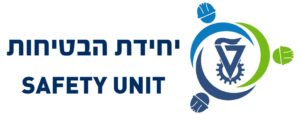Who is a "radiation worker"?
A radiation worker is determined according to the Occupational Safety and Health Regulations - 'Occupational Exposure and Health in Work with Ionizing Radiation,' 1992, and environmental monitoring and biological monitoring of employees in hazardous substances, 2011. These regulations adopt the requirements and guidelines of the Israeli Atomic Energy Commission's radiation protection standard since 1987 and its updates
These regulations, issued by the Ministry of Transportation, deal with the safety and protection of employees working with ionizing radiation, environmental monitoring, personal monitoring, as well as medical supervision and the medical examination procedures for the workers.
Who is classified as a radiation worker, and upon whom do the occupational safety regulations apply?
A radiation worker is anyone engaged in ionizing radiation under the following conditions:
- Occupational exposure (meaning exposure of the body or parts of the body to ionizing radiation due to their employment, studies, or research, excluding exposure to natural background radiation and radiation from medical treatment/diagnosis) that may exceed one-tenth of the annual dose limit, equivalent to 0.05 mSv/y.
- Works a minimum of 200 hours per year in one or more of the jobs specified in the third addition of the regulations. One of the workplaces is laboratories in research institutions and higher education institutions where they operate or use radiation sources such as X-ray machines, accelerators, sealed sources emitting gamma radiation and beta radiation, and open radioactive sources.
- Such an employee, whose occupational exposure may exceed one-tenth of the annual dose limit in one year or works in one or more of the specified jobs for at least 200 hours per year, is considered a radiation worker.
- By decision of the radiation safety officer.
- The head of the radiation safety and hazards unit is authorized to classify other Technion employees as radiation workers, even if they do not meet the criteria specified in the definition, based on their discretion.
Limitations on exposure to ionizing radiation:
These limitations on exposure to ionizing radiation are determined in the Occupational Safety Regulations as follows:
- Occupational exposure of a radiation worker within one year should not exceed the annual dose limit, which is 20 mSv per year, but not more than 100 mSv in any consecutive 5-year period.
- Exposure of women of childbearing age (up to 45 years) should not exceed 20 mSv per year and 4 mSv per month.
- Exposure of pregnant women throughout the pregnancy should not exceed 1 mSv, and 0.1 mSv per month.
- Exposure of individuals from the general public (non-radiation workers) should not exceed 1 mSv per year overall, but not more than 0.3 mSv for any single activity.
It is recommended to plan work and take reasonable actions and measures to minimize the exposure of radiation workers to within one-tenth of the specified dose limits. In other words, to ensure safe work in ionizing radiation, it is advisable to plan work so that the occupational exposure of radiation workers does not exceed 5-2 mSv per year
Personal control and monitoring
Every radiation worker must be under the supervision of the Ministry of Labor, the Ministry of Environmental Protection, and the Radiation Safety Unit. They are required to fulfill the duties of a radiation worker according to the Occupational Safety and Health Regulations for Ionizing Radiation, 1992, and environmental and biological monitoring of workers in hazardous substances, 2011.
Who is subject to personal monitoring and surveillance?
Every radiation worker should be under personal control under the following conditions:
- If they are likely, due to their work, studies, or professional training, to be exposed to ionizing radiation at a rate exceeding one-third of the annual limit, equivalent to 15 mSv per year, or if they work in a place listed in the third addition of the regulations.
- Personal control for a worker expected to be externally exposed will be through a personal dosimeter worn in appropriate places on the body throughout their time dealing with radiation sources. In other words, every radiation worker found in a radiation field of 2.5 mSv per hour must wear a radiation tag. The personal radiation tag will be read in the personal dosimetry section of the Nuclear Research Center (NRC) once a month/two months, depending on the nature of the radiation work, unless instructed otherwise by the radiation supervisor.
- Personal control for a worker expected to be internally exposed due to internal radioactive contamination will also include radiotoxicological testing (to identify the types of contamination and assess its quantity). In other words, every radiation worker working with radioactive materials in an amount of ALI 10 per year must undergo radiotoxicological testing. The frequency of tests for radiation workers dealing with open radioactive materials will be at least once every three months, unless instructed otherwise by the radiation supervisor.
Records of personal dosimetry results or radiotoxicological tests will be kept by the Radiation Safety and Hazards Unit for 50 years after the worker has ceased their radiation work at the Technion.
Medical Examination:
Occupational safety regulations stipulate that an individual may not work in ionizing radiation unless they have undergone a medical examination by an authorized physician from an accredited medical service, who will determine their suitability to start or continue working in ionizing radiation:
- Initial medical examination – shortly before the start of employment.
- Periodic medical examination – at least once a year.
- Additional medical examination in the following cases: a. After being absent from work for more than 60 consecutive days due to prolonged illness. b. After exposure to a radiation dose exceeding the limit. c. In the fourth month of pregnancy for a radiation worker who is pregnant."

